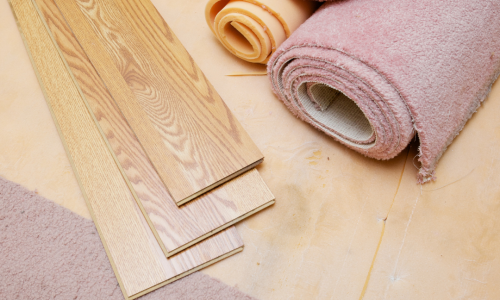When it comes time to replace or upgrade the carpets in your home, the process of removing the old carpet can seem straightforward enough. However, many homeowners encounter unexpected challenges and make common mistakes that can complicate the task and lead to additional expenses. Understanding these pitfalls beforehand can save you time, money, and frustration. In this blog post, we will explore the top 10 mistakes people often make when removing carpets. From underestimating the time required to improperly handling delicate materials, each mistake will be highlighted along with practical tips on how to avoid them. Whether you’re a seasoned DIY enthusiast or tackling this project for the first time, being aware of these common errors will help ensure a smoother and more successful carpet removal process. Stay tuned to learn how you can sidestep these pitfalls and achieve professional results in your own home.
In every endeavor, whether it’s crafting a masterpiece or fixing a leaky faucet, having the right tools is essential. Yet, time and again, people find themselves using the wrong tools for the job. This common mistake can lead to inefficiency, frustration, and even significant setbacks. Understanding why this happens and its implications is crucial for anyone striving to achieve optimal results in their tasks and projects.
The primary issue with using the wrong tools is their lack of effectiveness. Tools are designed with specific purposes in mind, whether it’s the precision of a scalpel in surgery or the strength of a wrench in mechanical repairs. When a mismatch occurs, tasks become harder to accomplish, often resulting in subpar outcomes. For instance, using a butter knife instead of a screwdriver might temporarily tighten a loose screw, but it won’t secure it properly or prevent future issues.

Beyond inefficiency, using inappropriate tools can cause damage. Imagine using a hammer when a delicate touch is required. The brute force intended for nails could easily crack or shatter delicate materials. In software development, using outdated libraries or frameworks can introduce security vulnerabilities or compatibility issues, potentially compromising entire systems.
Time is a precious commodity, and using the wrong tools wastes it unnecessarily. Whether it’s spending hours trying to force a tool to work where it doesn’t belong or fixing mistakes caused by improper tools, the result is lost productivity. This wasted time could have been better spent on advancing the project or focusing on other critical tasks.
Safety is another critical consideration. Using improper tools increases the risk of accidents and injuries. For example, using a makeshift ladder instead of a sturdy one might lead to falls and serious harm. In medical professions, using outdated equipment or incorrect procedures jeopardizes patient safety and well-being.
Using the wrong tools can also lead to financial repercussions. It might seem cost-effective initially to use what’s available rather than investing in proper tools. However, the long-term costs associated with inefficiency, repairs, or redoing work can far outweigh the initial savings. Businesses and individuals alike must consider the total cost of ownership when deciding on tools.
In every task, preparation sets the stage for success. Yet, it’s a common oversight to neglect preparing the work area adequately. Whether it’s starting a new project, conducting a meeting, or even preparing a meal, the surroundings play a crucial role in efficiency, safety, and the overall quality of the outcome. Understanding the significance of proper preparation can lead to smoother processes, fewer setbacks, and enhanced results across various domains.
Properly preparing the work area enhances efficiency and productivity. Imagine beginning a project without organizing tools or materials. Each step becomes slower and more cumbersome as time is wasted searching for essentials or clearing clutter. Conversely, a well-prepared space ensures everything needed is readily accessible, minimizing interruptions and maximizing workflow.
Safety should always be a top priority. Failure to prepare the area can lead to hazards and accidents. For example, a cluttered construction site increases the risk of tripping or falling objects. In healthcare settings, an uncleaned operating room can lead to infections. Proper preparation mitigates these risks by creating a safe environment where procedures can be carried out smoothly and securely.
Attention to detail starts with a well-prepared environment. Whether it’s cooking a meal or conducting a scientific experiment, a clean and organized workspace promotes accuracy and precision. It ensures that each step is carried out according to plan, minimizing errors and ensuring high-quality outcomes. In creative fields like art or design, a clutter-free space fosters creativity and allows ideas to flow freely.
In professional settings, the state of the work area reflects on professionalism. Clients, customers, or colleagues form impressions based on the environment they encounter. A tidy and organized workspace conveys competence, attention to detail, and respect for those involved. Conversely, a disorganized or unkempt area may create doubts about reliability and commitment to quality.
Preparing the area effectively contributes to better time management and focus. A well-organized workspace reduces distractions, allowing individuals to concentrate on the task at hand. This focused approach leads to more efficient use of time and energy, ultimately speeding up completion times and improving overall productivity.
When it comes to carpet removal, safety should always be a top priority. Ignoring safety precautions not only puts you at risk of injury but can also lead to damage to your property. In this article, we’ll discuss the risks associated with neglecting safety measures during carpet removal and provide essential tips to ensure a safe and successful project.
Removing carpet may seem straightforward, but avoiding common pitfalls can save you time, effort, and money. By being aware of the top 10 mistakes in carpet removal, you can ensure a smoother process and achieve better results. Whether you’re tackling this project yourself or hiring professionals, understanding these pitfalls will help you navigate the challenges effectively. Remember, preparation is key, from understanding the type of carpet and padding you’re dealing with to taking proper safety precautions. With the right approach, you can transform your space without unnecessary setbacks.
If you’re in the Raleigh area and need expert assistance with carpet removal or any junk hauling services, don’t hesitate to reach out to JUNKAHAULICS. Located conveniently in Raleigh, you can contact us at 919-478-4814. Our team of professionals is ready to provide reliable service, ensuring your carpet removal project is handled efficiently and with care. Visit our website for more information on our services and how we can assist you in making your home or business space cleaner and more functional.


JUNKAHAULICS